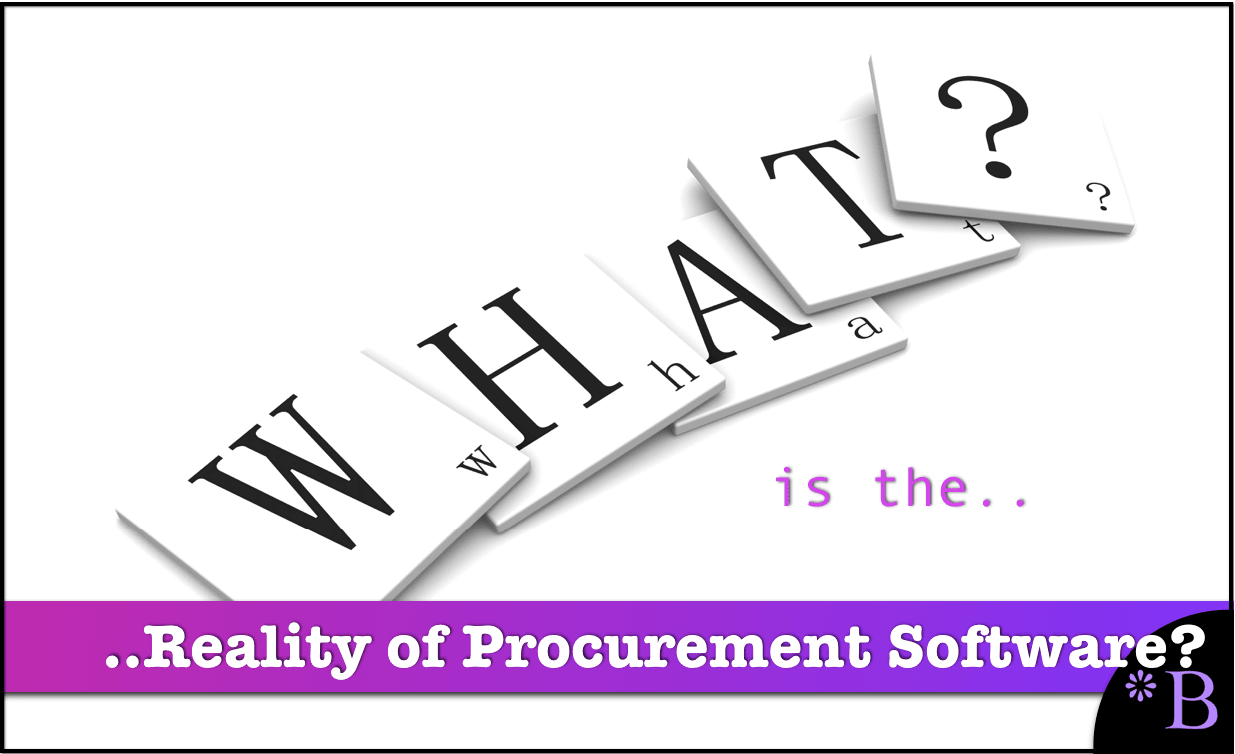The Top Procurement Software Analysis Complications
Executive Summary
- Procurement software analysis is often a process that just declares the company is ready for a procurement system.
- This article explains the top complications when trying to obtain an unbiased outcome.

Introduction
Procurement software analysis is fraught with complications. In this article, we cover these complications and how we surmount them.
Our References
See our references for this article and related articles at this link.
Complication #1: Selecting a Conflicted System Selection Advisor
This is normally not a mentioned item. However, there is a greater probability that the company will select a financially biased selection advisor for their readiness assessment that has financial relationships that it does not disclose to you. This means that they will most often rig the procurement software analysis to state that the company is ready for a procurement system. And of course, if the vendor recommends the advisor, then the advisor will simply recommend that specific vendor’s procurement software. It is really just that simple.
Complication #2: Not Questioning The Assertions of Vendors and Consulting Firms
Procurement software came about because of the shortcomings of ERP systems and to provide for enhancements to ERP procurement functionalities, more efficient procurement management, better ability to group vendors, better visibility to the procurement spend, and other improvements over ERP functionality. Furthermore, ERP systems have always been a liability in procurement because procurement systems are inherently collaborative, and ERP systems tend to be more about sharing data within the company versus collaborating with customers, suppliers, contract manufacturers, etc.
Anyone who hires the vast majority of advisors to perform a procurement software analysis or evaluation will invariably just have these unproven assertions repeating the claims of procurement software vendors back to them. If the advisor does not repeat these assertions, they can stay goodbye to any partnership and therefore deal flow that they receive from procurement software vendors.
Listening to Whom on Procurement Software?
Software Advice has coverage of procurement software. However, they mix in ERP systems like SAP S/4HANA and Microsoft Dynamics, which should not be in that category, most likely because of the influence of these vendors over Software Advice. Remember, most of these online advisory websites like G2Crowd serve as marketing front ends for vendors and are compensated by generating leads.
And it’s not just the advisory firms. We reviewed all of the top articles according to Google on procurement software, and they all fit into the pattern of repeating mindless assertions. There were no independent articles in the top results. These are the articles potential buyers are reading to determining if they should buy procurement software for their company?
Complication #3: A New More Sophisticated Procurement Process
Most companies that purchase procurement software currently use a combination of an ERP system and spreadsheets to accomplish the task. This means that when looking for procurement software, the options open up to expand the functionality footprint. This means that unless a company does not already have an ERP system and is migrating from a customized system, the company will need to review its procurement requirements again. This is because they may have been unnecessarily oversimplified just to make them fit into what the ERP system had to offer.
Conclusion
The procurement software industry is designed to get customers “on the ramp” to implement procurement systems and extract the most out of them. In nearly all cases, the procurement software analysis is just a fake process where the advisor states that the company is ready to move to a procurement system. This is then followed by an exposition of the benefits of procurement software. This does not have to be the case, and there are many ways of changing this.